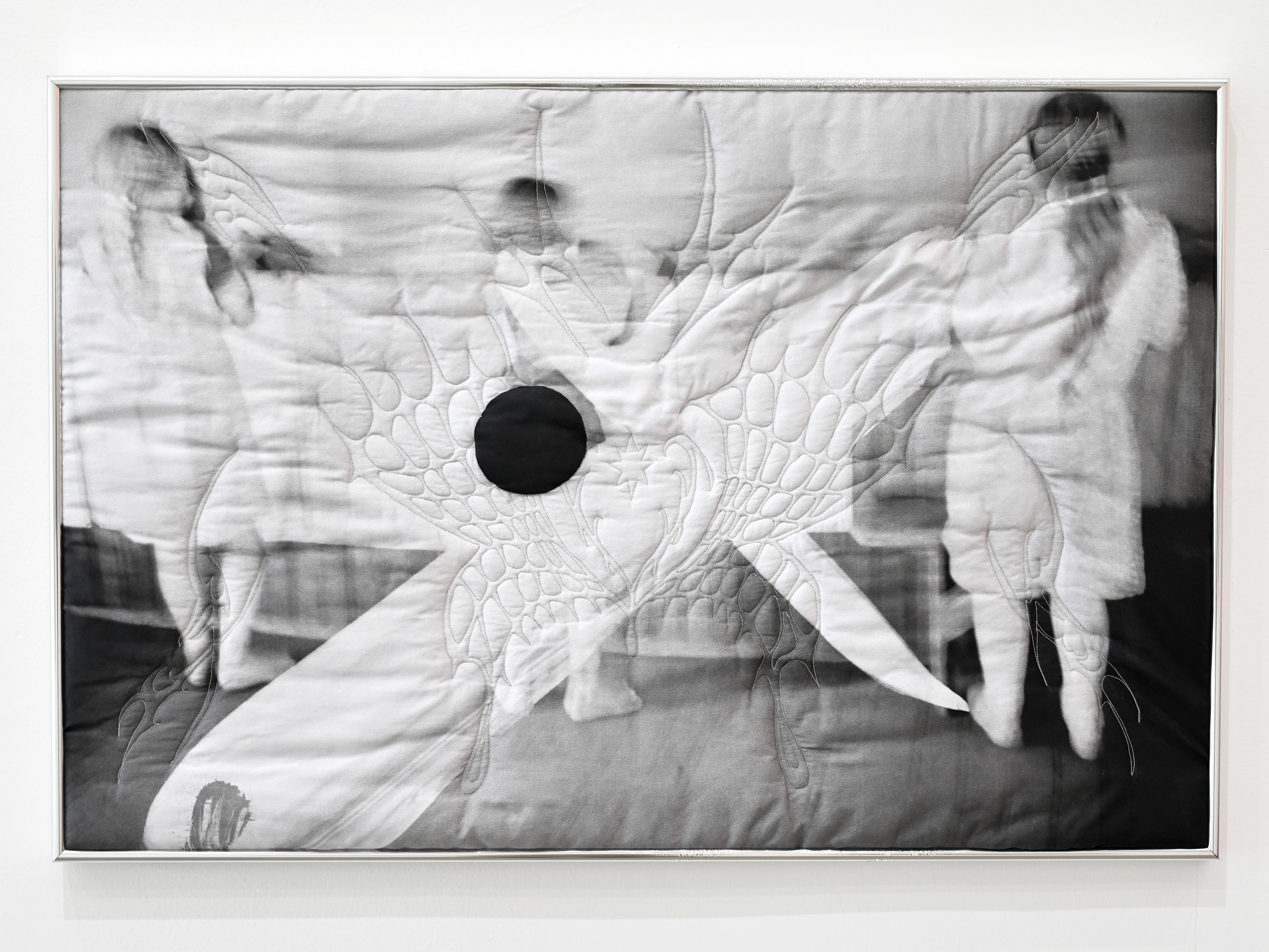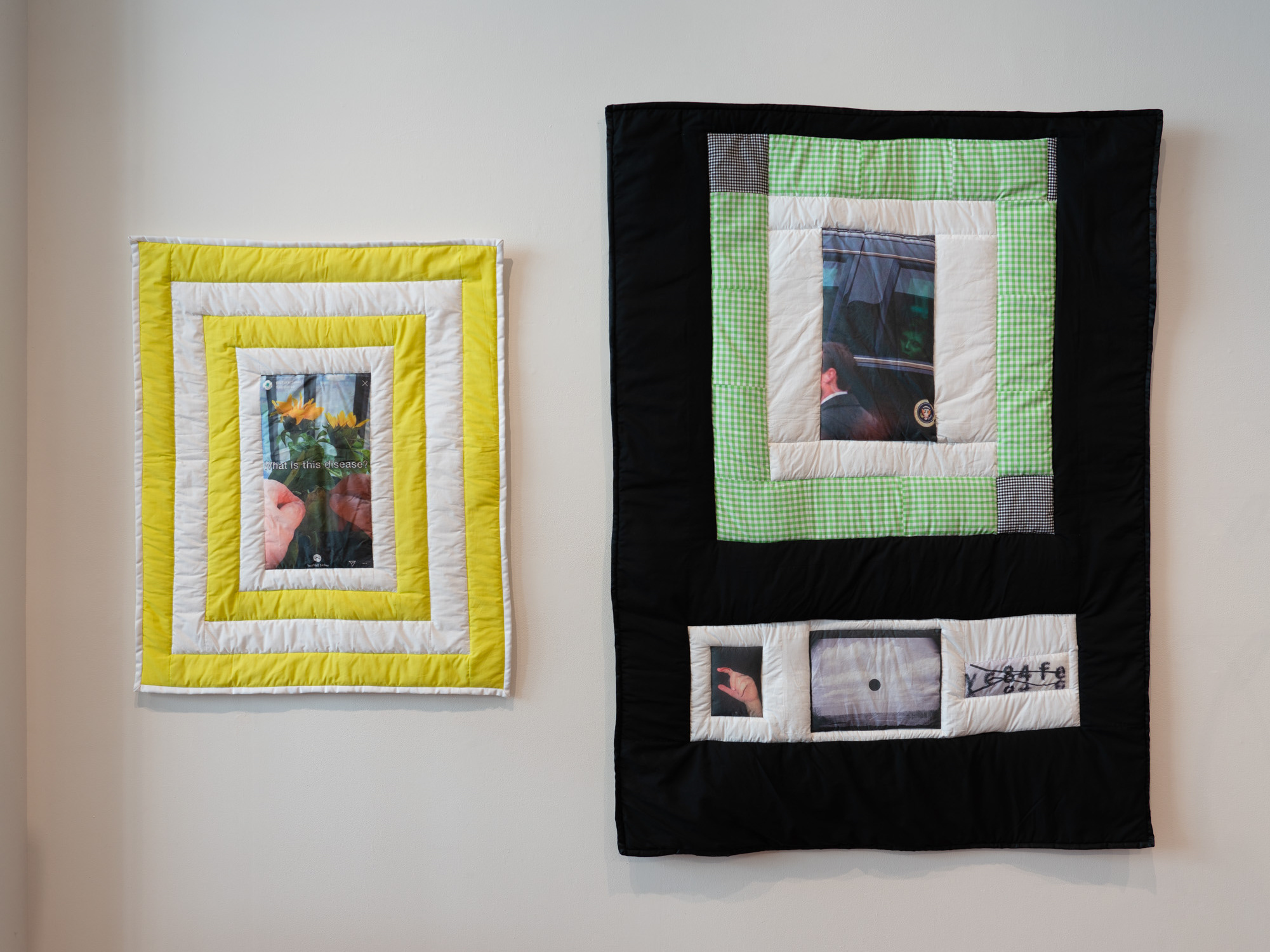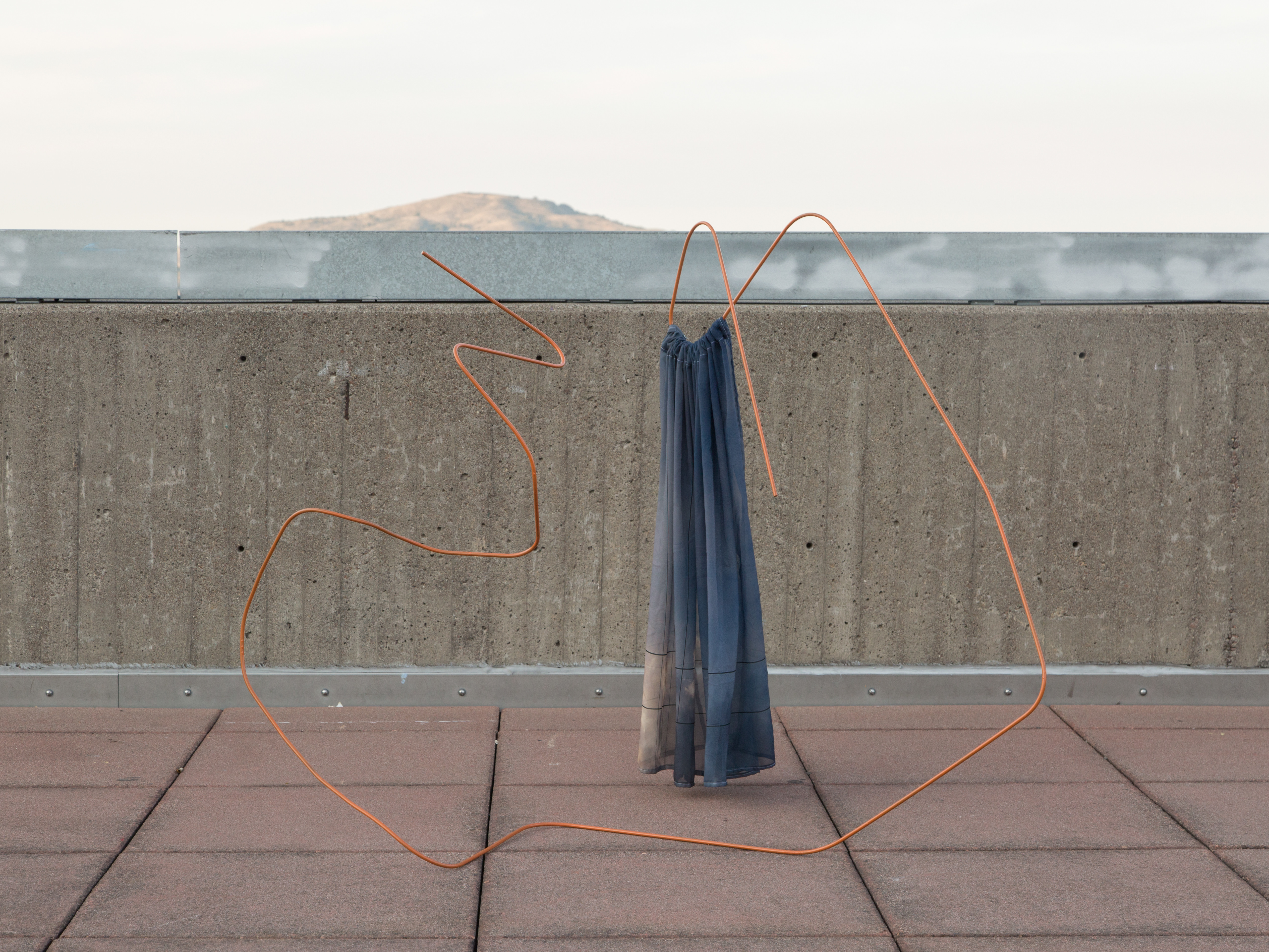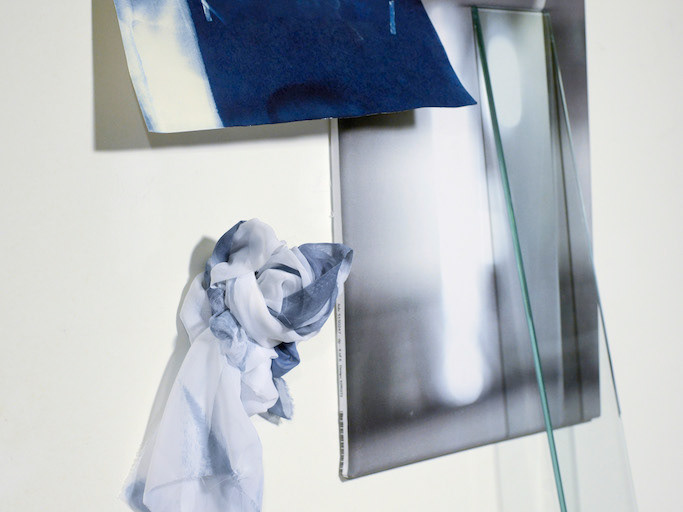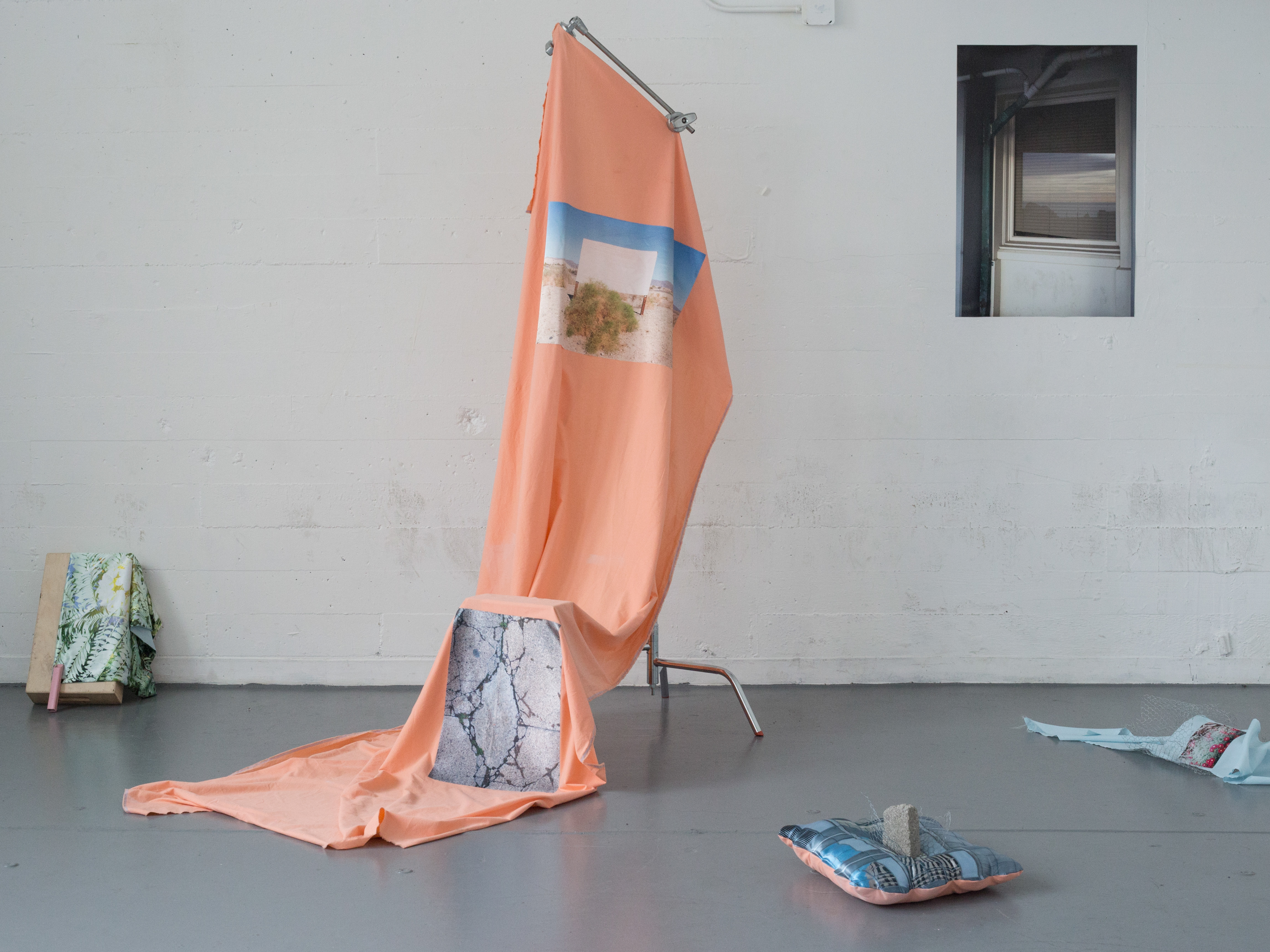femmebot
January 31, 2025- March 24, 2025
“Images have become our true sex objects. It is this promiscuity and the ubiquity of images, this viral contamination of images which are the fatal characteristics of our culture.” - Jean Baudrillard, The Ecstasy Of Communication, 1987
Creative marketing firm John McNeil Studio has partnered with Janie Perez-Radler of jane galerie for a curatorial residency and to re-launch its quarterly exhibition series, Limited Edition. Limited Edition first started as a 250 square foot wall located within the creative studio’s lobby area in 2015, and paused operations in 2020 due to COVID-19. Today, the Berkeley, Calif. based studio is reintroducing Limited Edition to invite a new artist every quarter to interpret the possibilities of a small gallery space and celebrate different perspectives and creative practices. rel robinson will be the first artist to show work in the space in the past five years, presenting two new quilted works from her most recent series, “femmebot.”
rel robinson is a San Francisco-based multi-media artist whose work seeks to create a new archival system incorporating and innovating various technologies and mediums such as textiles, photography, writing, painting, and installation. robinson’s work investigates the topicality of a two-dimensional photograph on a physical and conceptual level, taking equal inspiration from artists like Sophie Calle and Liz Deschenes to Charli XCX and close relationships with mentors, family, and friends. rel’s work implores what new archival systems are being created to harness time as technology advances rapidly.
“femmebot” is derived from the name of a song by the critically acclaimed pop superstar, Charli XCX. Despite the common perception of the artist and pop star as the ‘cool girl always out on the town,’ both Charli and rel spend a significant amount of their time in their studios reflecting on relationships, love, and fantasy. Similarly, we often think of the archetype of the female robot designed specifically for male pleasure. Contending with both of these preconceived models, the protagonist in this song and the portrayals of women in rel’s work are emblematic of the empowered woman able to control men through stealthily equipping their femininity and sexuality.
For this solo exhibition, rel creates a site-specific installation manufacturing two multi-layered “femmebots” of her own. The backdrop of the installation is various found antique fabrics sewn together overlaid with two stretched quilted pieces containing images of women, fruit, and sunsets taken from various sources of inspiration and archives from the artist’s life. Over these layers of fabric, rel embroiders divine feminine symbols such as ribbons, mirrors, bows, lamps, and scissors. The background of her largest piece to date, femmebot 1.0/gertrude, is a scan of an abstract painting robinson made right after art school when she was trying to figure out how to navigate the awkward space between just leaving art school and entering the professional world. For the background of her other work, femmebot 2.0 / clement angel, rel subtly explores using AI for the first time alongside other mediums she's been using for much longer. It is used in collaboration rather than as a substitution for original artwork. rel reminds us “Trusting myself to do something I don’t know how to do is a lot harder but also a lot more rewarding.”
Motifs of classical sculpture, plastic, and flowers frequently appear in robinson’s work. femmebot 2.0 / clement angel is dotted with decorative text serving as architectural scaffolding. There’s also a yellow price tag of $4.99 on the watery plastic, raising the question: what does it mean when we put a price on an angel - and a bargain at that? The angel is framed in an illustration of an advertisement for Riverside Press, a book imprint started in 1852, containing Greek columns decorated with fruit, another common libidinal symbol in rel’s work. This container prompts us to question the transition of the most common consumption of media from written text to images and how that impacts one's perception and relation to the world.
When asked what will become of her archive in 200 years, rel responded, “I hope that the person looking at it feels what it felt like to live in a world where I can be taking a picture of my butt in new jeans and get a notification about the permafrost melting. And I hope it’s conveyed that there was a lot of beauty in the absurdity as well.”
